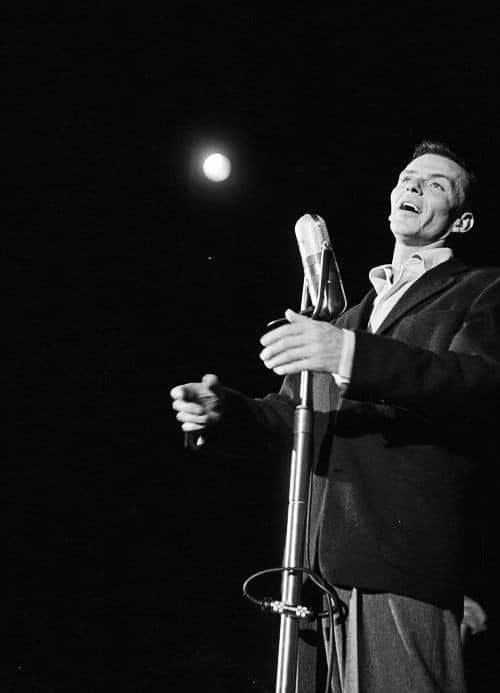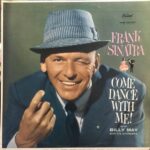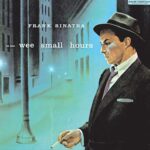
Sinatra’s vocal technique
By Mahnuel Muñoz
Since he first felt the desire to sing, Frank Sinatra opted for virtuosity when it came to modeling his style and getting the most out of the instrument. Like all young vocalists of his time, he began emulating Bing Crosby, but very soon he understood that to achieve the goal of becoming the best vocalist he would have to offer something different, and to do so he was inspired by “bel canto”, a style vocal developed in Italy between the 17th and 19th centuries.
In bel canto, the perfect production of “legato” (the fluid and uninterrupted interpretation of notes) was intended throughout the entire vocal register, as well as the development of virtuosic elements such as coloratura, the trill, the brilliance of the treble and perfect management of breathing.
His greatest learning period took place with Tommy Dorsey’s orchestra. According to Frank himself, he had to learn by himself, since Dorsey gave more importance to the instrumentalists and did not work with him much. Sinatra nourished his art with what his environment provided, especially the way Dorsey played the trombone; He could play musical phrases of up to sixteen bars without stopping and apparently without taking a breath. Frank decided to find out how he did it, convinced that this technique would allow him to add greater drama to the songs, without interrupting the melody and message of the musical pieces.
Sinatra watched Tommy carefully trying to figure out if he was breathing without anyone noticing. Finally, after much observation, he noticed that Dorsey took a breath almost imperceptibly from the corner of his mouth. Frank insisted that his voice work the same way.
To sustain the notes without noticing that he was breathing, he would need prodigious breath control. To do this, he underwent intense swimming and athletics training. He would dive underwater or run, hold his breath, and sing the songs in his head for the approximate amount of time he needed to sustain certain notes. Part of the magic was that he seemed very simple, but he wasn’t that simple at all.
But he also had to learn to breathe without being noticed. The truth is that it was easier for Tommy Dorsey to conceal his breathing technique while he played the trombone, because his mouthpiece covered his mouth. Frank would need more time and training, but in the end he got it.
He became so masterful of breathing that it seemed that he sang without breathing, holding the notes longer than any other performer, and when he decided to breathe, he did so in the most noticeable way, with a moan of anguish when it suited the lyrics of the song. song he played.
His breathing technique proved to be as decisive for the telling of his stories as it was for the performance of his songs. In an interview he said: “It is important to know how to breathe correctly at certain moments in a song, because otherwise what you say seems disjointed. For example, there is a phrase in the song “Fools Rush In” that says: “Fools rush in where wise men never go, but wise men never fall in love, so how are they to know.” Well, this should all be one sentence, because it tells the story. But sometimes you hear someone singing “Fools rush in” and breathe just before “where wise men never go”, to interrupt yourself again and then continue with “but wise men never fall in love…” now, if you do it without breathing, you convey the meaning, you have counted the whole story.
Frank’s amazing ability as a vocalist enchanted everyone and everyone. Everyone was left speechless by his display of virtuosity and the mystery of his technique.
About his performance of the song “Old Man River,” vibraphonist Emile Richards commented: “He kept his hands behind his back as if they were handcuffed, he threw his shoulders back and forth, and he bent his torso to draw in more air. He began: “Tote that barge, lift that bale, you get a little drunk and you land in jail” and without pausing to breathe he continued with “I get weary”. I get Weary.” And I tell you, by the time I got to that point I was fucking tired. The effect was such that it gave me goosebumps or made me cry.” (Richards talks about the song “Ol’Man River”)
This technique allowed him to sing more and better than anyone else during his long career. As the years went by and his voice changed, Frank Sinatra adopted a more conversational or harsher tone, depending on the material to be recorded; He continued taking singing classes to get the most out of his instrument despite the mistreatment he subjected him to during his long nights of partying and the abuse of tobacco and alcohol. When he had to face a long recording session or a tour, Sinatra drastically reduced his consumption of whiskey and cigarettes.
In the final phase of his career, when his voice could no longer give the glorious notes that shone in his youth and maturity, even though they continued to vibrate within him, Sinatra began to develop a more recitative style, in which the Dramatism became more important than the voice itself, with shocking results.
If you want to visit more articles about the life of Frank Sinatra enter the following Sinatra Radio 24h link: https://sinatraradio24h.com/category/articles/
We remind you that you can also listen to Sinatra Radio 24 hours on your mobile phone by downloading our free applications for Android in the Play Store https://play.google.com/store/apps/details?id=sinatra.radio24h
















